California Department of Conservation Sees 100% Improvement in Driver Behavior
Choosing a telematics solution can be a long, drawn-out process, particularly for a government agency. So, when a team needs to make a switch, it can be even more challenging. The California Department of Conservation faced such a scenario in early 2020, but by choosing Sawatch Labs, they were able to make the switch quickly—resulting in 100% improvement in driver behavior and efficiency.
The Challenge: Making a Telematics Switch
Making the decision to implement a telematics solution, choosing a vendor, and installing it can be a long drawn out and arduous process, particularly for a government agency. Realizing that you have to change vendors can be potentially even more challenging. But that’s exactly the situation California’s Department of Conservation (DOC) found itself in about a year ago. The department had been using another vendor’s telematics solution, but it just didn’t measure up. There were reporting issues, particularly around speeding, which didn’t reflect the reality of the off-road work that the drivers were performing. The department also had problems related to billing, which took a long time to rectify and caused snarls with the state’s internal systems. There was also an ongoing problem with the hardware, which appeared to be draining vehicles’ batteries — an issue that couldn’t be solved by this vendor. Perhaps the biggest issue was that the vendor couldn’t set reminders for drivers to report that they were using a particular vehicle, where and when they started work, and, most importantly, where they were and how they were behaving behind the wheel.
Our Solution: Geotab & Custom Driver Technology
After careful evaluation of their needs and pain points, Sawatch Labs decided that Geotab would be the best telematics software for their situation. Geotab offers better equipment, better reporting, and an increased potential for increased safety.
The switch to Geotab happened quickly, primarily due to Geotab being on California’s statewide approved vendor contract. With Geotab’s real-time reporting, department leaders are notified of incidents immediately — previously it may have been hours after an incident occurred. With audible warnings, drivers can also be cued — and self-correct their behavior — related to seatbelt usage and speeding.
In addition, Sawatch Labs took analyzing driver behavior even further. They not only coordinated the installation of 125 devices, including driver ID technologies, but they also developed a custom project that allowed drivers to view their driving behaviors and techniques. This allows drivers to take an active role in reducing their risky driving behavior, which ultimately contributes to cultivating a more sustainable fleet. Also, to ensure DOC drivers and fleet managers stayed informed, Sawatch Labs provided year-round troubleshooting support as well as annual training sessions that covered all the latest software information and strategies for optimal fleet performance.
The Results: 100% Improvement
In the few months the California DOC partnered with Sawatch Labs, they have seen significant improvements. “What I noticed out of the gate was drivers were fobbing 100% of the time — and it’s being remedied by the employees not their managers,” says Paula Hutchinson, California Department of Conservation Fleet Administrator. And it’s not just fobbing that’s seen significant improvement. Drivers are safer. Previously, they had 30 to 40 violations per month, which resulted in lots of research to figure out what happened. Now, they’re averaging only one or two violations; and for the month of November, they had zero violations. In addition to cutting down violations, Hutchinson notes this will result in even few public complaints about drivers. “We have a better image as a whole,” she says. With Geotab technology, the DOC was even able to solve the mystery of the drained batteries using engine data to prove that it wasn’t related to the Geotab devices, but driver behavior. Improvements aren’t just related to driver behavior. Thanks to Sawatch Labs and Geotab, the department is in the process of automating its monthly mileage reporting, which must be completed every month. The impact will be “huge,” according to Hutchinson.

